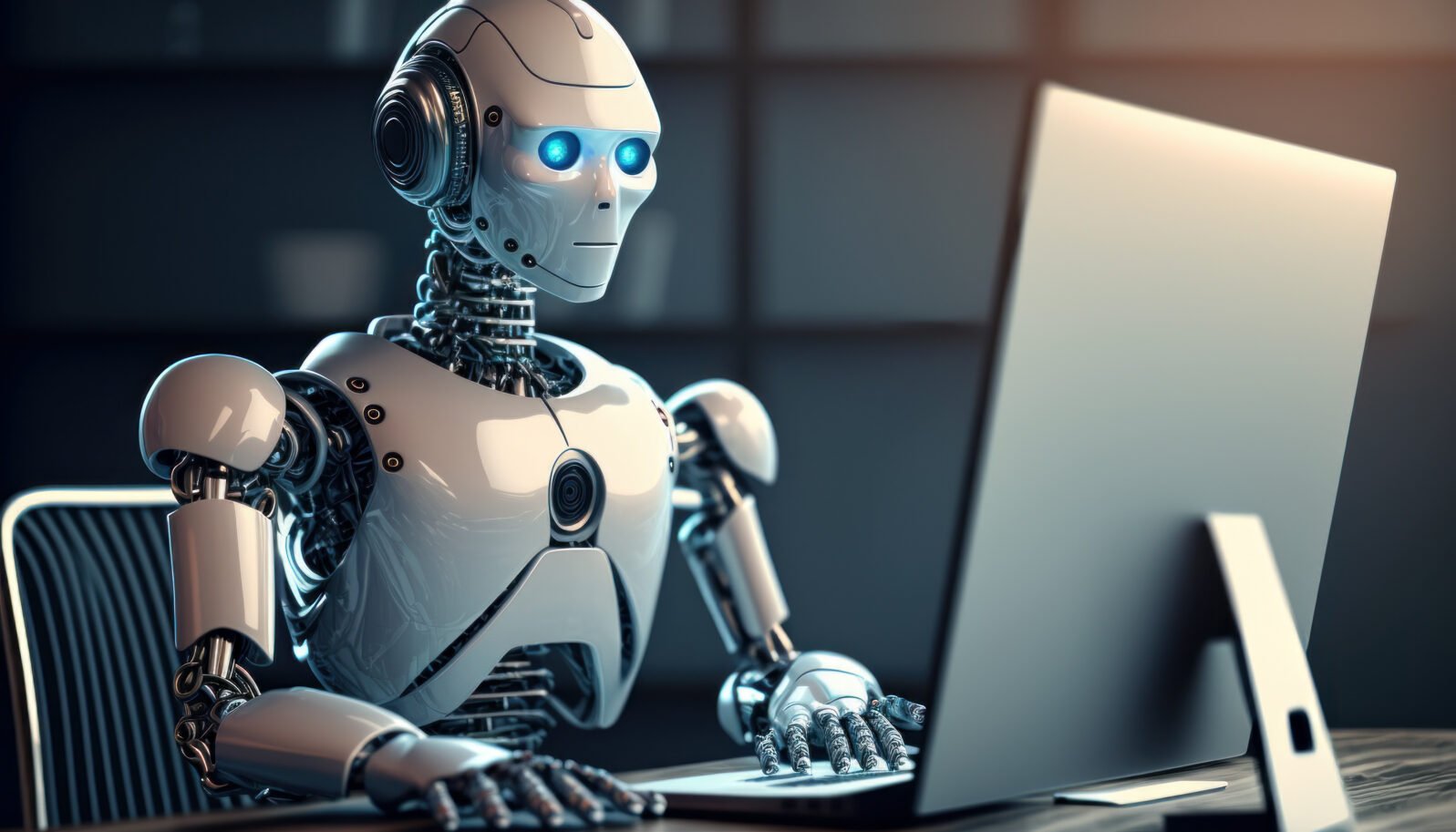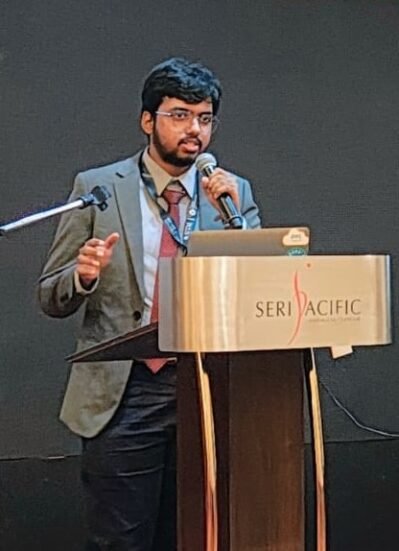AI Research
AI stethoscope can detect dangerous heart conditions in seconds

The first artificial intelligence (AI) stethoscope has gone beyond listening to a heartbeat.
Researchers at Imperial College London and Imperial College Healthcare NHS Trust discovered that an AI stethoscope can detect heart failure at an early stage.
The TRICORDER study results, published in BMJ Journals, found that the AI-enabled stethoscope can help doctors identify three heart conditions in just 15 seconds.
According to the British Heart Foundation (BHF), which partially funded the study, the researchers analyzed data from more than 1.5 million patients, focusing on people with heart failure symptoms like breathlessness, swelling and fatigue.
A total of 12,725 patients were examined with the new AI stethoscope technology. The patients were found to be twice as likely to be diagnosed with heart failure compared to similar patients not examined with the tool.
Patients examined with the stethoscope were also about 3.5 times more likely to be diagnosed with atrial fibrillation (abnormal heart rhythm), which increases the risk of stroke.
AI stethoscope patients were also twice as likely to receive a heart valve disease diagnosis, where one or more valves work improperly.
“Given an earlier diagnosis, people can access the treatment they need to help them live well for longer.”
All three of these conditions require early diagnosis to receive potentially life-saving treatment, according to the BHF press release.
Dr Patrik Bächtiger, a clinical lecturer at Imperial College London, noted in a statement that the design of the stethoscope, which was developed in 1816, has not changed in 200 years.
“It is incredible that a smart stethoscope can be used for a 15-second examination, and then AI can quickly deliver a test result indicating whether someone has heart failure, atrial fibrillation or heart valve disease,” he wrote.
Dr Sonya Babu-Narayan, clinical director at the British Heart Foundation and consultant cardiologist, also commented in a statement that these heart conditions are often diagnosed at advanced stages when patients arrive at the hospital for emergency care.
“Given an earlier diagnosis, people can access the treatment they need to help them live well for longer,” she said.
Nearly 6.7 million people are living with heart failure in the U.S., according to the Centers for Disease Control and Prevention.
Heart failure can cause symptoms like shortness of breath, weight gain, fatigue, weakness and swelling in the feet, legs, ankles or stomach.
The risk for heart failure can be brought on by conditions like diabetes, obesity, high blood pressure and heart disease-related conditions, the above source states.
How the device works
The AI stethoscope, which is only about the size of a playing card, takes an ECG recording of the electrical signals from the patient’s heart. The microphone on the tool also records the sound of blood flowing through the heart.
The recorded information is analyzed by AI algorithms that have been trained on health data from tens of thousands of people. The tool then generates a test result for heart failure risk.
Every morning, the NY POSTcast offers a deep dive into the headlines with the Post’s signature mix of politics, business, pop culture, true crime and everything in between. Subscribe here!
A separate algorithm can detect atrial fibrillation, which often shows no symptoms.
Risks and limitations
Researchers suggest that there needs to be more integration of the technology into general practice, as 70% of practitioners with smart stethoscopes stopped using them after 12 months.
The study also found that two-thirds of people who were suspected to have heart failure were found to not have the condition after a further blood test or heart scan.
“That could lead to unnecessary anxiety and tests for some people,” BHF wrote in the release. “The researchers stress that the AI stethoscope should be used for patients with symptoms of suspected heart problems, and not for routine checks in healthy people.”
In a recent interview with Fox News Digital, cardiothoracic surgeon Dr. Jeremy London commented on the emergence of AI in medicine.
“Deciding which protocol is the science of medicine; whether or not that protocol is actually appropriate for that patient is the art of medicine,” said the Georgia-based doctor.
“And with AI, there isn’t a human quality to that at this point, so figuring out how to interface those two is a real challenge.”
“The AI stethoscope should be used for patients with symptoms of suspected heart problems, and not for routine checks in healthy people.”
London emphasized the need to use AI as “a framework, not as an absolute, because it can be wrong.”
“Particularly when we’re taking care of people … we must make certain that we are doing it properly.”
The doctor said he believes that in the long term, AI will be “more beneficial than detrimental” in medicine.
The TRICORDER study was funded by the National Institute for Health and Care Research (NIHR), British Heart Foundation and Imperial Health Charity, and was presented at the European Society of Cardiology’s annual congress in Madrid.
AI Research
Measuring Machine Intelligence Using Turing Test 2.0

In 1950, British mathematician Alan Turing (1912–1954) proposed a simple way to test artificial intelligence. His idea, known as the Turing Test, was to see if a computer could carry on a text-based conversation so well that a human judge could not reliably tell it apart from another human. If the computer could “fool” the judge, Turing argued, it should be considered intelligent.
For decades, Turing’s test shaped public understanding of AI. Yet as technology has advanced, many researchers have asked whether imitating human conversation really proves intelligence — or whether it only shows that machines can mimic certain human behaviors. Large language models like ChatGPT can already hold convincing conversations. But does that mean they understand what they are saying?
In a Mind Matters podcast interview, Dr. Georgios Mappouras tells host Robert J. Marks that the answer is no. In a recent paper, The General Intelligence Threshold, Mappouras introduces what he calls Turing Test 2.0. This updated approach sets a higher bar for intelligence than simply chatting like a human. It asks whether machines can go beyond imitation to produce new knowledge.
From information to knowledge
At the heart of Mappouras’s proposal is a distinction between two kinds of information, non-functional vs. functional:
- Non-functional information is raw data or observations that don’t lead to new insights by themselves. One example would be noticing that an apple falls from a tree.
- Functional information is knowledge that can be applied to achieve something new. When Isaac Newton connected the falling apple to the force of gravity, he transformed ordinary observation into scientific law.
True intelligence, Mappouras argues, is the ability to transform non-functional information into functional knowledge. This creative leap is what allows humans to build skyscrapers, develop medicine, and travel to the moon. A machine that merely rearranges words or retrieves facts cannot be said to have reached the same level.
The General Intelligence Threshold
Mappouras calls this standard the General Intelligence Threshold. His threshold sets a simple challenge: given existing knowledge and raw information, can the system generate new insights that were not directly programmed into it?
This threshold does not require constant displays of brilliance. Even one undeniable breakthrough — a “flash of genius” — would be enough to demonstrate that a machine possesses general intelligence. Just as a person may excel in math but not physics, a machine would only need to show creativity once to prove its potential.
Creativity and open problems
One way to apply the new test is through unsolved problems in mathematics. Throughout history, breakthroughs such as Andrew Wiles’s proof of Fermat’s Last Theorem or Grigori Perelman’s solution to the Poincaré Conjecture marked milestones of human creativity. If AI could solve open problems like the Riemann Hypothesis or the Collatz Conjecture — problems that no one has ever solved before — it would be strong evidence that the system had crossed the threshold into true intelligence.
Large language models already solve equations and perform advanced calculations, but solving a centuries-old unsolved problem would show something far deeper: the ability to create knowledge that has never existed before.
Beyond symbol manipulation
Mappouras also draws on philosopher John Searle’s famous “Chinese Room” thought experiment. In the scenario, a person who does not understand Chinese sits in a room with a rulebook for manipulating Chinese characters. By following instructions, the person produces outputs that convince outsiders he understands the language, even though he does not.
This scenario, Searle argued, shows that a computer might appear intelligent without real understanding. Mappouras agrees but goes further. For him, real intelligence is proven not just by producing outputs, but by acting on new knowledge. If the instructions in the Chinese Room included a way to escape, the person could only succeed if he truly understood what the words meant. In the same way, AI must demonstrate it can act meaningfully on information, not just shuffle symbols.
Can AI pass the new test?
So far, Mappouras does not think modern AI has passed the General Intelligence Threshold. Systems like ChatGPT may look impressive, but their apparent creativity usually comes from patterns in the massive data sets on which they were trained. They have not shown the ability to produce new, independent knowledge disconnected from prior inputs.
That said, Mappouras emphasizes that success would not require constant novelty. One true act of creativity — an undeniable demonstration of new knowledge — would be enough. Until that happens, he remains cautious about claims that today’s AI is truly intelligent.
A shift in the debate
The debate over artificial intelligence is shifting. The original Turing Test asked whether machines could fool us into thinking they were human. Turing Test 2.0 asks a harder question: can they discover something new?
Mappouras believes this is the real measure of intelligence. Intelligence is not imitation — it is innovation. Whether machines will ever cross that line remains uncertain. But if they do, the world will not just be talking with computers. We will be learning from them.
Final thoughts: Today’s systems, tomorrow’s threshold
Models like ChatGPT and Grok are remarkable at conversation, summarization, and problem-solving within known domains, but their strengths still reflect pattern learning from vast training data. By Mappouras’s standard, they will cross the General Intelligence Threshold only when they produce a verifiable breakthrough — an insight not traceable to prior text or human scaffolding, such as an original solution to a major open problem. Until then, they remain powerful imitators and accelerators of human work — impressive, useful, and transformative, but not yet creators of genuinely new knowledge.
Additional Resources
AI Research
UTM Celebrates Malaysia’s Youngest AI Researcher Recognised at IEEE AI-SI 2025 – UTM NewsHub

KUALA LUMPUR, 28 August 2025 – Universiti Teknologi Malaysia (UTM) proudly hosted the Institute of Electrical and Electronics Engineers (IEEE) International Conference on Artificial Intelligence for Sustainable Innovation (AI-SI) 2025, themed “Empowering Innovation for a Sustainable Future.” The conference gathered global experts, academics, and industry leaders to explore how Artificial Intelligence (AI) can address sustainability challenges. Among its highlights was the remarkable achievement of 17-year-old Malaysian researcher, Charanarravindaa Suriess, who was celebrated as the youngest presenter and awarded Best Presenter for his groundbreaking paper on adversarial robustness in neural networks. His recognition reflected not only individual brilliance but also Malaysia’s growing strength in the global AI research landscape.
Charanarravindaa’s presentation, titled “Two-Phase Evolutionary Framework for Adversarial Robustness in Neural Networks,” introduced an innovative framework designed to improve AI systems’ ability to defend against adversarial attacks. His contribution addressed one of the most pressing challenges in AI, ensuring resilience and trustworthiness of machine learning models in real-world applications. Born in Johor Bahru, his journey into science and computing began early; by primary school, he was already troubleshooting computers and experimenting with small websites. At just 15 years old, he graduated early, motivated by a passion for deeper challenges. Participation in international hackathons, including DeepLearning Week at Nanyang Technological University (NTU) Singapore, strengthened his resolve and provided the encouragement that led to his first academic paper, now internationally recognised at IEEE AI-SI 2025.
Beyond academia, Charanarravindaa has also demonstrated entrepreneurial spirit by founding Cortexa, a startup dedicated to advancing AI robustness, architectures, and applied AI for scientific discovery. His long-term vision is to integrate artificial intelligence with quantum computing and theoretical physics to expand the boundaries of knowledge. This ambition is a testament to the potential of Malaysia’s youth in contributing to frontier technologies. His recognition at IEEE AI-SI 2025 reflects IEEE’s mission of advancing technology for humanity, where innovation is seen as a universal endeavour not limited by age. By honouring a young researcher, IEEE underscored its commitment to empowering future generations of scientists and innovators to shape technology for global good.

During the conference, the Faculty of Artificial Intelligence (FAI), UTM, represented by Associate Professor Dr. Noor Azurati Ahmad, extended an invitation to Charanarravindaa to explore possible research collaborations. This initiative aligns with FAI’s vision to be a leader in AI education, research, and innovation, with a particular focus on trustworthy, robust, and sustainable AI. Early discussions centred on aligning his research interests with UTM’s expertise in advanced architectures and digital sustainability. Such collaboration exemplifies how institutions and young talent can come together to accelerate innovation, while also strengthening Malaysia’s position as an emerging hub for AI research and talent cultivation.
At the national level, this achievement resonates strongly with the Malaysia National Artificial Intelligence Roadmap (2021–2025), which identifies talent development as a central pillar in building an AI-ready nation. Prime Minister Datuk Seri Anwar Ibrahim has repeatedly highlighted the urgency of nurturing local talent to enhance competitiveness and leadership in the global digital economy. Charanarravindaa’s success demonstrates tangible progress in this direction, showcasing how Malaysia can produce young innovators capable of contributing to both national aspirations and international scientific advancement. Through platforms such as IEEE AI-SI 2025, UTM reaffirms its role as a catalyst for excellence in AI research and talent development, embodying its mission to prepare the next generation of scholars and innovators who will drive sustainable futures.
AI Research
Databricks at a crossroads: Can its AI strategy prevail without Naveen Rao?

“Databricks is in a tricky spot with Naveen Rao stepping back. He was not just a figurehead, but deeply involved in shaping their AI vision, particularly after MosaicML,” said Robert Kramer, principal analyst at Moor Insights & Strategy.
“Rao’s absence may slow the pace of new innovation slightly, at least until leadership stabilizes. Internal teams can keep projects on track, but vision-driven leaps, like identifying the ‘next MosaicML’, may be harder without someone like Rao at the helm,” Kramer added.
Rao became a part of Databricks in 2023 after the data lakehouse provider acquired MosaicML, a company Rao co-founded, for $1.3 billion. During his tenure, Rao was instrumental in leading research for many Databricks products, including Dolly, DBRX, and Agent Bricks.
-

 Business2 weeks ago
Business2 weeks agoThe Guardian view on Trump and the Fed: independence is no substitute for accountability | Editorial
-
Tools & Platforms1 month ago
Building Trust in Military AI Starts with Opening the Black Box – War on the Rocks
-

 Ethics & Policy2 months ago
Ethics & Policy2 months agoSDAIA Supports Saudi Arabia’s Leadership in Shaping Global AI Ethics, Policy, and Research – وكالة الأنباء السعودية
-

 Events & Conferences4 months ago
Events & Conferences4 months agoJourney to 1000 models: Scaling Instagram’s recommendation system
-

 Jobs & Careers2 months ago
Jobs & Careers2 months agoMumbai-based Perplexity Alternative Has 60k+ Users Without Funding
-

 Podcasts & Talks2 months ago
Podcasts & Talks2 months agoHappy 4th of July! 🎆 Made with Veo 3 in Gemini
-

 Education2 months ago
Education2 months agoVEX Robotics launches AI-powered classroom robotics system
-

 Education2 months ago
Education2 months agoMacron says UK and France have duty to tackle illegal migration ‘with humanity, solidarity and firmness’ – UK politics live | Politics
-

 Podcasts & Talks2 months ago
Podcasts & Talks2 months agoOpenAI 🤝 @teamganassi
-

 Funding & Business3 months ago
Funding & Business3 months agoKayak and Expedia race to build AI travel agents that turn social posts into itineraries





















